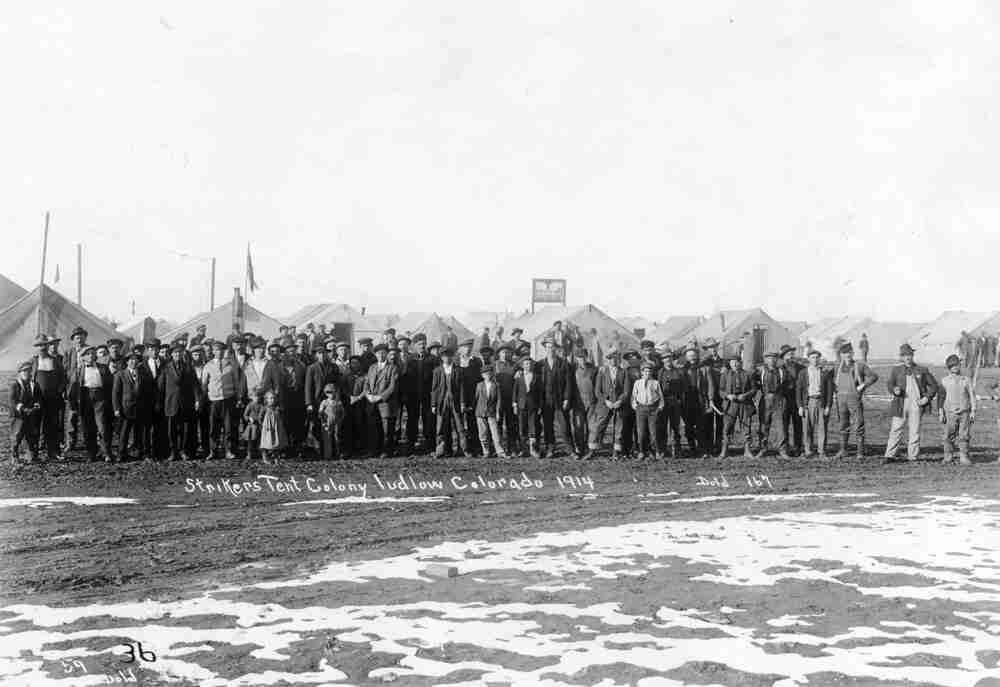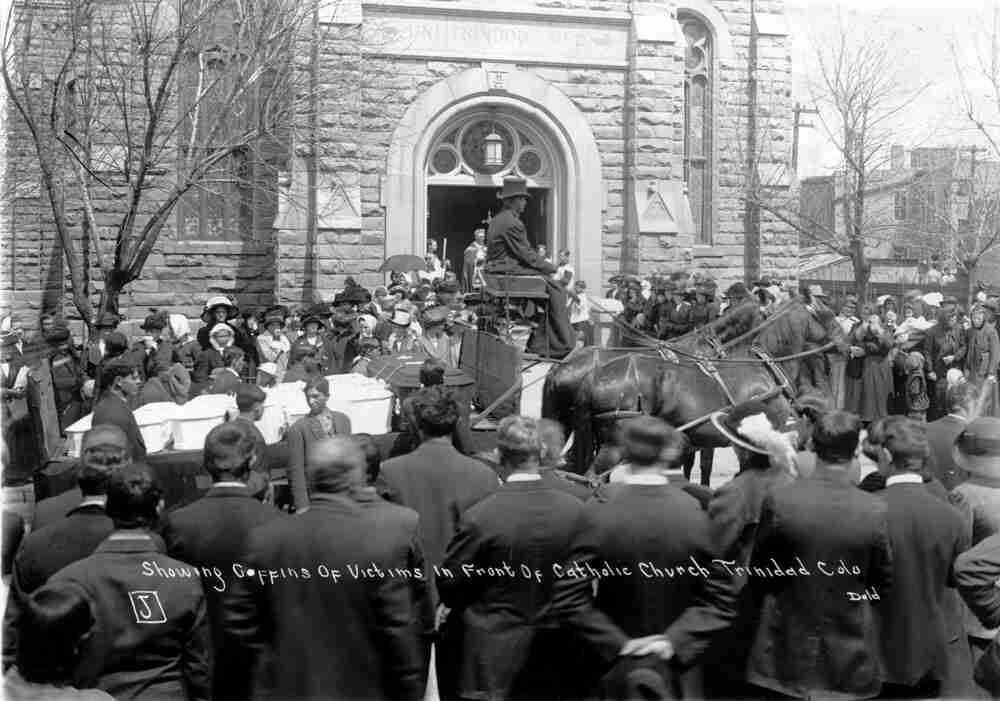Ludlow Massacre
Full Article
The Ludlow Massacre began on the morning of April 20, 1914, when a battle broke out between the Colorado National Guard and striking coal miners at their tent colony outside of Ludlow in Las Animas County. Nobody knows who fired the first shot, but the incident is remembered as a massacre because the miners and their families bore the brunt of the casualties. At least nineteen people died, including one guardsman, five miners, and thirteen women and children who suffocated as they hid from the gunfire in a pit. More died in violence throughout southern Colorado over the next few days. No matter how the casualties are counted, the Ludlow Massacre is one of the bloodiest events in American labor history.
The massacre was the culminating event of the 1913–14 Colorado coal miners’ strike. The strike had two main goals: getting coal operators to follow state of Colorado mining law and gaining representation by the United Mine Workers of America (UMWA) for Colorado’s coal miners. The dispute was bloody from the outset, with deaths on both sides. The state’s largest private employer, the Colorado Fuel and Iron Company (CF&I), employed most of the striking miners. Since it had more resources than the miners, its efforts to intimidate union members into ending the dispute resonated most in the public mind. For example, on October 17, 1913, an armor-plated car (quickly dubbed the “Death Special”) shot up the miners’ tent colony at Forbes, killing one and scaring many. As a result of such tactics, every miners’ tent colony was heavily armed. In response to that, Colorado Governor Elias M. Ammons deployed the National Guard to keep the miners under control.
The Guard was supposed to maintain the peace, but since mine owners had already worked out a deal with the state to pay for the cost of the deployment, the troops actually caused more trouble. The battalion also included many veterans of the Spanish-American War and the Philippine Insurrection who were conditioned to think of the multi-ethnic miners as their inferiors.
No matter which side fired first on April 20, the battle began as a result of mutual distrust and fear. With a history of violence on both sides, any minor incident could have blown up to be a major conflict. Once that conflict started, most of the residents of the Ludlow colony evacuated. Thinking the colony had been abandoned, Guardsmen burned the tents to the ground. Nobody knew about those thirteen women and children and the pit until their bodies were found the next morning, suffocated by the fumes rather than shot down in cold blood, as the miners alleged. However, an accurate indicator of the Guard’s unbridled hostility toward the miners was the cold-blooded execution of three leaders under a flag of truce. Louis Tikas, a Greek-American leader of the striking miners, was shot three times in the back.
Ramifications from the Massacre began instantly. When other miners heard of the events at Ludlow, they went on a killing spree across the region. Mine supervisors and guards were shot. Mine property was destroyed. Innocent people were killed on both sides. It is impossible to determine how many people died in the days after the Massacre, although it was certainly more than the number of the people who died in the initial tragedy. Rumors of a slaughter by the National Guard ran rampant, fueled by the outside world’s inability to confirm what happened. On April 28, President Woodrow Wilson dispatched the US Army to Colorado, thereby ending the violence and restoring order to the region.
The 1913–14 Colorado coal strike ended in December 1914 with the union achieving none of its stated objectives. Nevertheless, the deaths of the women and children in the “death pit” captured the public imagination. In an era that can still be described as “Victorian” in outlook, killing unarmed women and children (even if done by accident) was completely unacceptable to the American public. Therefore, despite the hostile press that striking miners had received before the Massacre, media outlets attacked the mine owners with gusto afterwards. It was Denver’s Rocky Mountain News, rather than the miners, that coined the term “Ludlow Massacre” shortly after the event. A clever media campaign by the UMWA that included a nationwide speaking tour by female survivors of the massacre won further support for the union cause. An investigation of the strike and subsequent massacre by the US Commission on Industrial Relations under Chairman Frank Walsh kept the tragedy in the news for years after it happened. The primary object of union and public hostility after the Ludlow Massacre was John D. Rockefeller, Jr., the oil baron’s son and primary stockholder of CF&I. Shortly after the tragedy, the writer Upton Sinclair and others protested outside Rockefeller’s New York City office.
Sinclair was also part of a mock trial of Rockefeller for murder near the industrialist’s hometown in upstate New York. As a result, Rockefeller hired the future Prime Minister of Canada (then a former Labor Minister), W. L. Mackenzie King, to design the so-called Rockefeller Plan, an employer representation plan (or “company union” to critics) that was designed to give miners just enough rights and privileges in order to avoid future tragedies. In 1918 the UMWA erected a statue commemorating the Ludlow Massacre on the site of the tent colony. The union continues to commemorate the event each year to this day.
In 2009 the US Department of the Interior declared the site a National Historic Landmark, one of only two such sites in the country related to American labor history. April 20, 2014, marked the hundredth anniversary of the massacre. Governor John Hickenlooper convened a Ludlow Centennial Commemoration Commission to plan commemoration events across the state. Commemorative activities included a speakers’ series, symposia, a play, museum exhibits, and a Sunday church service at the Ludlow site.















